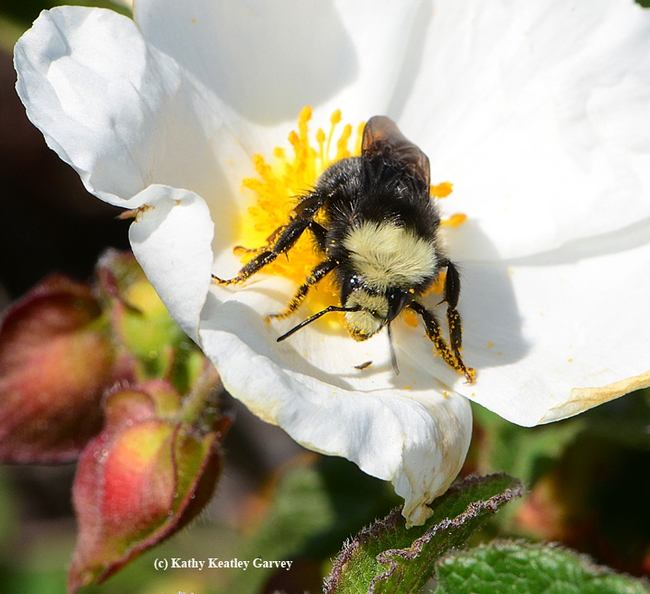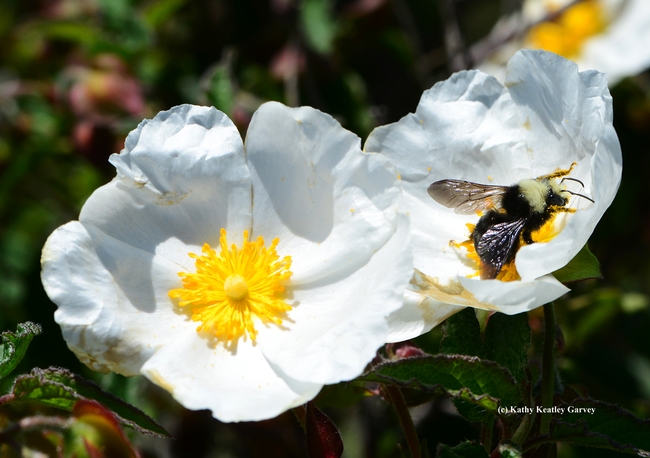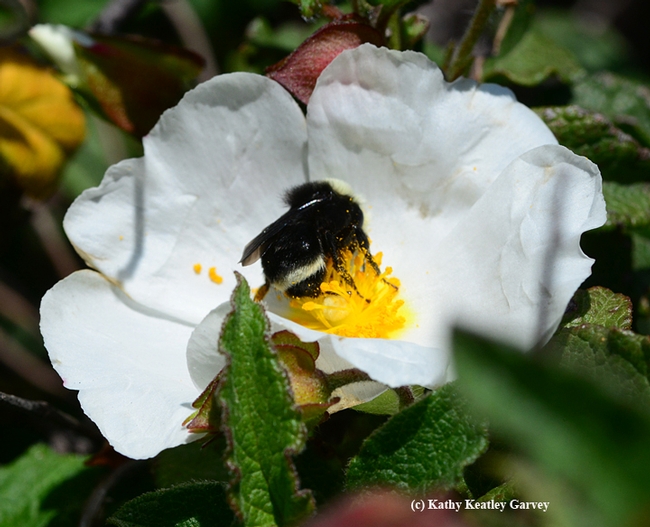"It was a bad hair day," quipped native pollinator specialist Robbin Thorp, emeritus professor of entomology at the University of California, Davis.
Yes, it was.
A very bad hair day.
Thorp was looking at several photos I took April 14 of a yellow-faced bumble bee, Bombus vosnesenskii Radoszkowski, 1862, foraging on rock rose (Cistaceae) at the Petaluma marina. With winds gusting at 18 miles per hour, the lone bumble bee struggled to right itself as the "Flight of the Bumble Bee" turned into "Crash Landings of the Bumble Bee."
This bee, also known as the Vosnesenskii Bumble Bee, was named by Polish entomologist Oktawiusz Wincenty Bourmeister-Radoszkowski (1820-1895) who worked in the Russian empire. It is one of the most common species near the West Coast, write Thorp, Leif Richardson, Sheila Colla and lead author Paul Williams in their newly published book, Bumble Bees of North America: An Identification Guide" (Princeton University Press).
Its habitat: open grassy areas, urban parks and gardens, chaparral and shrub areas, and mountain meadows. Indeed, the shrubby area around the Petaluma marina is perfect for bumble-bee habitat.
The authors report that the yellow-faced bumble bee likes a number of plants, including manzanitas (Arctostaphylos), ceanothus (Ceanothus), rabbitbush (Chrysothamnus), thistle (Cirsium), wild buckwheat (Eriogonum), California poppy (Eschscholzia), lupines (Lupinus), phacelia (Phacelia), rhododendrum (Rhododendrum), currants (Ribes), vetch (Vicia), goldenbush (Ericameria), godetia (Clarkia), and gumweed (Grindelia).
This little bumble bee showed a preference for rock rose, but the wind rocked its world.
Attached Images:

Yellow-faced bumble bee, Bombus vosnesenskii, foraging on rock rose. (Photo by Kathy Keatley Garvey)

Gust of wind blows the bumble bee to the next blossom. (Photo by Kathy Keatley Garvey)

Distinguishing characteristic of the yellow-faced bumble bee, Bombus vosnesenskii. (Photo by Kathy Keatley Garvey)